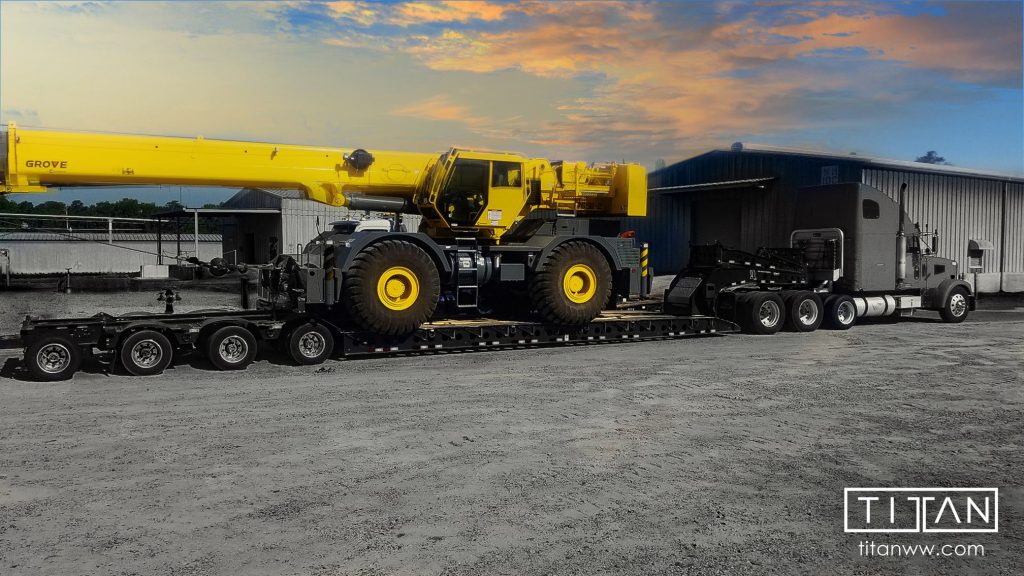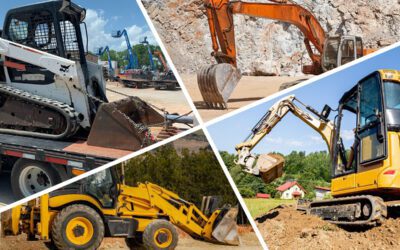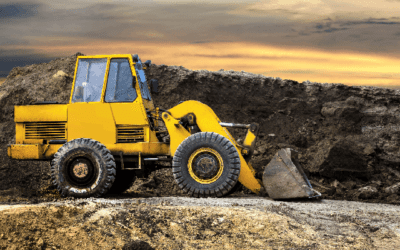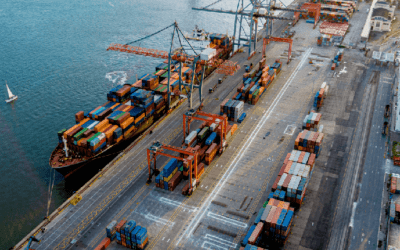Heavy Equipment Transportation: Your One-Stop-Shop in 2021
We solve your problems so you can spend time doing what you love! Heavy equipment transportation is crucial for many companies in many industries, and that’s why exceptional service matters.
Titan Worldwide’s close-knit team has decades of professional experience and expertise that ensures success when it comes to heavy equipment transportation. We are proud to service all 50 states, Canada, Mexico, and our international friends out there! No matter where we’re transporting to, your equipment will arrive safe and sound.
We don’t discriminate! Every heavy equipment size is welcome with open arms here at Titan Worldwide.
What is Heavy Equipment Transport?
If you’ve stumbled here and this is your first time around — no worries. We love to see fresh faces around here! Heavy equipment transportation requires a transporter with lots of experience and specialized equipment to handle heavier loads than the typical LTL and FTL freight.
But, what’s considered heavy equipment? Heavy equipment is equipment intended for “heavy” work like earthmoving, construction, land drilling, and lifting objects.
Here’s a list of some common heavy equipment that we transport for our clients:
- Heavy Construction and Mining Equipment — e.g. forklifts, bulldozers, excavators
- Oil and Gas Equipment — e.g. pumps, trucks, valves
- Railroad Equipment — e.g. flatcars, gondolas, boxcars, autoracks
- Wind Energy Components
- Fire Trucks
- Airplanes
- Helicopter
If you’re not sure if your equipment qualifies, feel free to use our chat feature or give us a quick call at (888) 500-8884.
How Much Does it Cost to Transport Heavy Equipment?
Because transporting heavy equipment varies so much from person to person — we can’t give you an exact cost. But, on average, our clients can expect to pay $5 for shorter journeys, and less than $2 for longer haul shipments.
Besides distance, there are a couple of other factors that will affect your cost per mile:
- Shipping Time — If you need something delivered in a specific amount of time and/or during a specific hour of the day, that is certainly possible but will cost more.
- Time Of Year — Seasons like Winter and Spring snow and rain the most. Roads may close, and that may delay your heavy equipment transport.
- Pick Up and Delivery Location — Urban and well-populated delivery locations will often cost less than remote places. That’s because delivering to remote areas requires more time and effort from our end.
- Item Size — In the rare scenario that your heavy equipment is too heavy for a flatbed rack, specially designed trailers will generally be the solution. Like with other transportation companies, heavier equipment will cost more than lighter ones. Heavier equipment may prevent our drivers from driving on the quickest routes. To learn more about heavy haul transportation services, please click here.
Heavy Equipment Shipping Overseas
At Titan Worldwide, we take pride in being able to provide heavy equipment transportation across the world. We haul all equipment, including construction equipment, mining equipment, and more so you don’t have to worry about it!
For most overseas heavy equipment transports, we suggest the Roll-on/Roll-off (RO-RO) method. Your equipment is driven onto the transport vessel via secure ramps, moved from its current location to your desired one in the vessel, and rolled off the vessel via secure ramps once again. After a bit of rolling, your equipment will arrive safe and sound. The RO-RO method can withstand almost any heavy equipment weight so you’re in good hands.
A flat rack container is another transportation option that’s equally as safe (though not as fun to say) as the RO-RO method. Similar to a flatbed truck, your heavy equipment is fastened on a flat rack and then loaded onto the transport vessel. These racks can hold equipment up to 88,000 pounds.
We’ll handle all the physical moving of equipment as well as the paperwork and permits to legally ship your heavy equipment. Just make sure you have a plan once we transfer your heavy equipment to the desired warehouse or port. Other than that, we’ve got every detail covered so you can rest easy!
Sit back and let the magic happen.
Our Heavy Equipment Process and Our Dedication to Safety
The safe and reliable transportation of heavy equipment is no easy task. After all, a slip-up with something as heavy as 50 hippos won’t go unnoticed! Through our experience, we’ve created and refined a set protocol to load, transport, and unload that minimizes risk and maximizes reliability. Here’s our process:
Loading On Cargo
- Perform the Logistics
Everything starts with a good plan. We map the best transport route ahead of time and even take an on-the-road test drive to ensure safety. Our team pays special attention to bridge weight capacities and road widths to ensure no U-turns are necessary!
- Team Huddle
In order to avoid communication errors, it’s important to get the team together for a team huddle. It’s crucial to get everyone on the same boat! We designate duties like driver, spotter, and crew, and communicate the exact time loading and transport will happen. Oh, most of the time, we’re eating donuts while these team huddles are happening too.
- Clean the Ramp and Trailer
We clean ramps and trailers to remove dirt, oil, debris, and then wipe dry. A clean surface promotes traction so that heavy equipment has an easier time going up the ramp. Less friction means less damage to your equipment. Cleaning the trailer will ensure that your heavy equipment stays in the same condition before and after transport. This is especially true for metal ramps.
- Clear and Level the Loading Area
Once the ramp is cleaned, we set up the ramp and start the loading. We test the ground to make sure it’s flat and strong enough to bear heavy weight without sinking. We level the loading area so nothing accidentally tips over and causes a big mess.
- Load the Heavy Equipment
Now that we’ve finished setting up, this is when all the action begins. Slow and steady is the name of the game here. Our driver carefully drives the heavy equipment up the ramp as the spotter waits for the heavy equipment to reach the front of the trailer. Once it reaches the front, the spotter gives a signal, and the process is complete!
The weight of heavy equipment should be distributed towards the front of the trailer so that fishtailing doesn’t occur during transport.
- Chain and Send Off
Of course, we can’t transport heavy equipment without securing it in place first. We abide by all legal regulations and restrictions, and use chains to lock the heavy equipment in place. We establish 4-5 tie points, use tight chains to ensure no wiggle room, and quadruple check that each chain and hook binder are compatible and aligned.
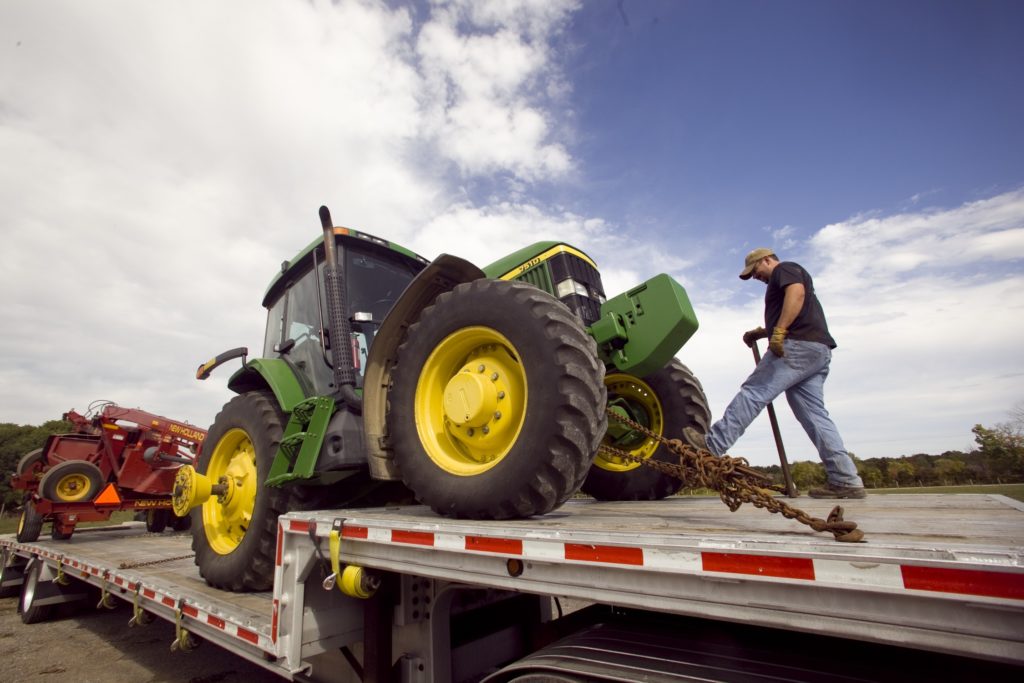
Off-Loading Cargo
- Clear and Level the Unloading Site
We take the time to ensure that the designated unloading area is free of people, flat, and strong enough to withstand the weight of two heavy vehicles. To give our drivers a break as fast as possible, we clear and level before the transport vehicle arrives.
You’ll also want to clean ramps beforehand as well. Prepping will improve efficiency and the team will spend less time just waiting around.
- Guide the Transport Vehicle
After arriving, we guide the transport vehicle to the appropriate parking spot. Once parked, our team will set up the ramp with the trailer bed. Everything’s almost done! With everything in place, we conduct one final check and review roles to make sure everyone’s on board.
- Free the Heavy Equipment
Your precious equipment is ready to move again! We remove chains and untie bounds one at a time. We’re careful to use a ratchet boomer so that chains don’t suddenly snap and hit your heavy equipment with full force.
- Down the Ramp We Go
Again, a driver and spotter will work together to get the heavy equipment safely down the ramp. Because the driver’s view might be hindered, we make sure that the spotter is visible at all times. When the heavy equipment goes down, clear the area until the process is complete.
- A Final Check
Before you can officially pick up your heavy equipment, our team will conduct a final ground inspection of all equipment. That includes the transport vehicle, tools, and anchor points. Once that’s done, we go out to celebrate and get some rest! Don’t worry, your heavy equipment will be safe and sound.
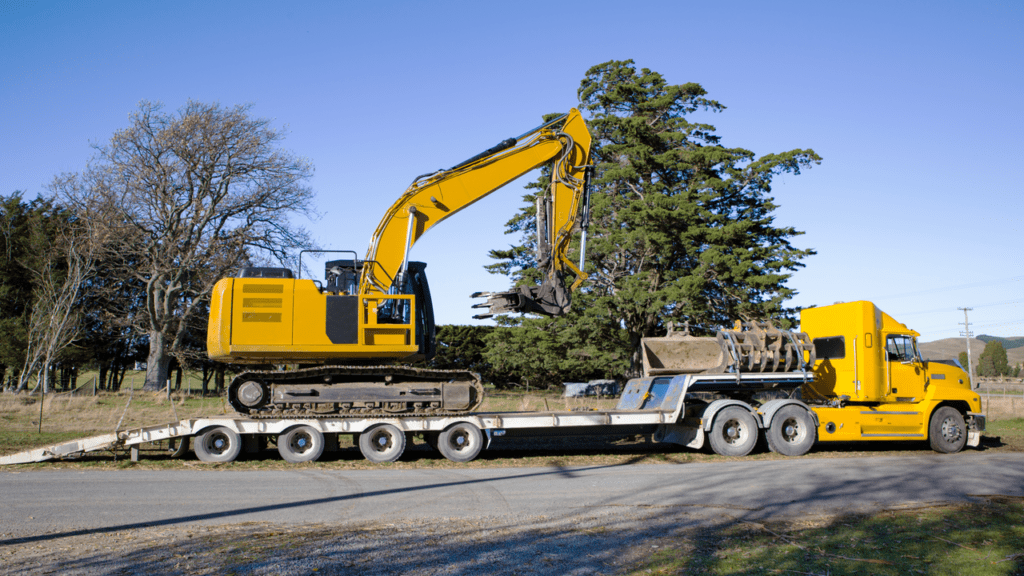
Why Choose Us
Heavy equipment shipping tends to be more expensive than typical tools, and are harder to replace. Luckily, you won’t have to hold your breath when working with Titan Worldwide!
Titan Worldwide guarantees durable and leading-grade trailers that handle equipment hauling logistics with ease. That means a safer, faster, and cheaper hauling experience for both you and us! Speaking of logistics — certain shipments with us will give you access to 1-on-1 time with our professional logistics agents.
Even if you’re new to shipping with third-party services like us, we have resources and a live chat to make your learning hurdle as easy as possible.
We are licensed, bonded, and insured for all equipment transport services. We treat all your equipment and supplies like newborn puppies (or kittens if you prefer)!
You’ve read this far, so you must be at least a little interested. Give us a commitment-free call at (888) 500-8884.
Don’t worry, we love making new friends (and don’t bite)!
